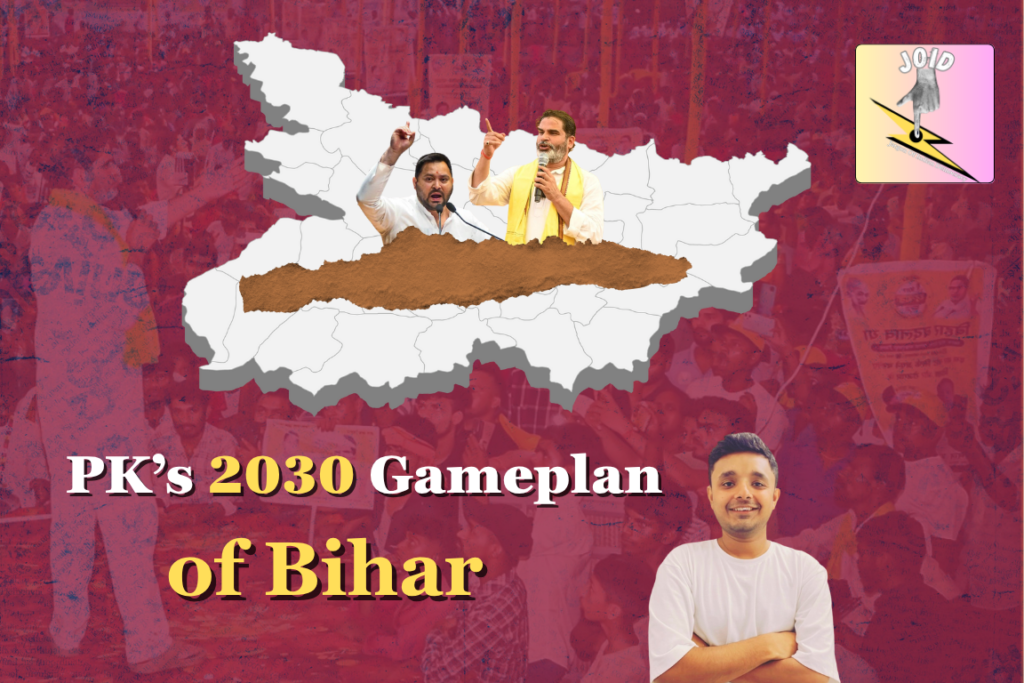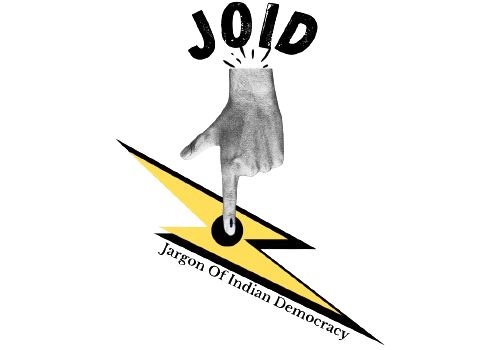
In the volatile political terrain of Bihar, every move is a calculated gamble. As the 2025 Assembly elections inch closer and political realignments become the talk of the state, it is crucial to understand the strategic mind of Prashant Kishor (PK), a man known for shaping electoral destinies from behind the curtain. His silence is rare, but his moves—when made—are almost always deliberate. One of the most under-discussed yet pivotal truths about PK’s long-term game lies in this simple but loaded calculus: It’s easier to defeat Tejashwi Yadav in 2030 than to dislodge a re-strengthened BJP-JDU alliance. And that may explain much of what we are seeing on the ground today.
The “Vote-Cutter” Theory: Who Benefits?
PK’s foray into Bihar politics through Jan Suraaj has often been brushed off by established parties as that of a non-serious disruptor. But for PK, disruption is the strategy. If his party cuts into just 3–7% of the vote share—especially in constituencies where the RJD-led Mahagathbandhan is in close contest—it may swing the seat in BJP’s favor in the short term. But here lies the twist: PK may not mind helping BJP now, as long as he ensures that BJP and JDU do not reconcile for a long-term alliance. For PK, a weak, divided BJP and a strong but beatable RJD is an ideal battlefield. Tejashwi represents a regional force with visible limitations: a caste-concentrated vote bank (mainly Yadavs and Muslims), high anti-incumbency if elected, and a lack of pan-Bihari appeal. Moreover, the shadow of Lalu-era corruption still lingers, which PK can exploit in 2030 with his clean-governance and technocratic narrative.
BJP, on the other hand, is a national behemoth with unmatched cadre strength, media narrative control, and deep pockets. If JDU returns to NDA, Nitish Kumar’s governance credibilitycould merge with BJP’s machinery, creating a 2005-style unbeatable front. For PK, this would be the worst-case scenario.
2025 Is Not the Destination. It’s the Battlefield
Many political analysts have misunderstood PK’s 2025 campaign as an attempt to win. But it’s likely a bid to position—to test waters, build structure, and gather credibility. He doesn’t need to win big to remain relevant; he just needs to be the factor that denies others a comfortable majority. And in the process, he ensures that no one consolidates power enough to become invincible by 2030.
If Tejashwi wins narrowly in 2025, he’ll enter power with high expectations and limited room to deliver. The alliance will be fragile, faction-ridden, and vulnerable to PK’s grassroots, issue-based mobilization in the years ahead. In contrast, if BJP-JDU come back together and secure a majority, the 2030 fight becomes a mountain, not a hill.
PK’s Fear of a Reunited BJP-JDU
One must not forget that PK was once Nitish Kumar’s advisor, and he knows the strengths and weaknesses of the JDU-BJP marriage intimately. He also knows that Nitish—despite his ideological somersaults—retains significant goodwill, particularly in rural and EBC (Extremely Backward Class) communities. In a reunited NDA, Nitish’s face and BJP’s base could complement each other to bulldoze any alternative narrative, including PK’s. Therefore, PK’s primary strategic goal right now is not merely to win votes, but to ensure that JDU and BJP do not walk hand-in-hand again. Whether by discrediting one side, poaching leaders,
or creating triangular contests that spoil alliance chemistry—PK’s invisible hand may be more active than we think.
Conclusion: Tejashwi Is the Lesser Resistance
In essence, PK’s long-term politics is about choosing the rival he can beat. Tejashwi, with his dynastic baggage and limited ideological clarity, is that rival. BJP, with its organizational juggernaut, isn’t. Therefore, don’t be surprised if in 2025, PK’s campaign ends up hurting Tejashwi in some places. That, paradoxically, might help PK in the longer run. The battlefield of 2025 is merely the beginning. For PK, the real war is in 2030—and for that, every pawn sacrificed today might just be a step toward future checkmate.
Our other articles : Does Bengal Have a PR Problem? | A scenario of “What ifs” in Bihar | German Chancellor Fellowship discussion |Mission 58: How Congress Plans to Flip Bihar | Bengal Bellwether – 2 | Bengal Bellwether – 1 | India United – India’s message is loud & clear on terrorism a diplomatic strike on terror| The Indian Stock Market is bleeding | SUPER NARI – 25 | Caste and the Ballot in Bihar | The suicidal mission of Pakistan’s so called ‘Establishment’ | Who is Responsible for Bihar’s Migration Crisis? | Why Congress must go solo in Bihar | Jai Bhim | Old is Gold , Resurrection of ‘Dynasty Politics’ | China Faces 125% Tariff by USA: A Strategic Opportunity for India | When the Accuser Becomes the Accused
Books that enriches – India after Gandhi by Ramchandra Guha | Contesting democratic deficit by Salman Khurshid | The election that surprised India By Rajdeep Sardesai

Ravi Kumar is a political consultant and Socio-Political Writer. He comments on different contemporary political issues and writes about it as he has sound experience due to his prolonged work on the ground as persistent observer of the Democracy on field.
